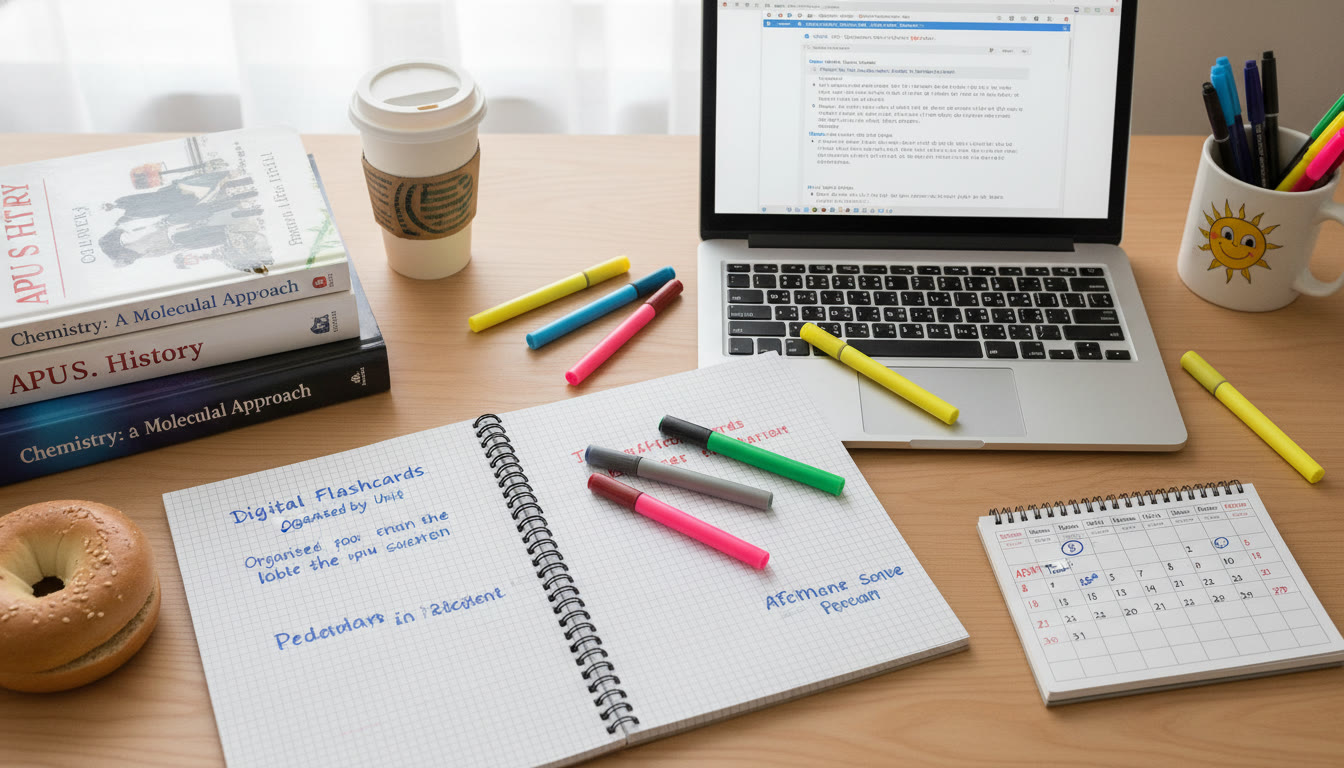Handwritten vs Typed Notes: The Question Every AP Student Asks
If you’re prepping for AP exams, you’ve probably stood at the crossroads of pen-and-paper nostalgia and the clean efficiency of a laptop. Which is better? The short answer is: it depends. The long answer—what follows—will give you research-based guidance, classroom-tested strategies, and a flexible game plan you can use for every AP course from Biology to U.S. History.

Why This Matters for AP Students
AP courses move fast. Teachers often expect you to absorb college-level concepts, synthesize evidence, and practice higher-order skills in limited class time. Your notes are the scaffolding that holds your study process together. Good notes help you:
- Distill dense lectures into manageable ideas.
- Create review materials for spaced repetition and practice.
- Produce clear examples for essays or free-response questions.
Choosing the right note-taking mode can affect how well you remember content, how efficiently you study, and how easily you review before the exam.
What the Evidence and Experience Tell Us
Students and educators often point to two consistent patterns:
- Handwriting slows you down, which can improve encoding and conceptual processing.
- Typing lets you capture more material and makes organization, search, and sharing easier.
Neither method is magically superior; each has strengths that map to specific moments in the AP study cycle. The trick is to know when to prefer one over the other and how to combine them for maximum effect.
A Simple Rule of Thumb
Use handwriting when the goal is deep understanding, synthesis, or memory encoding. Use typing when the goal is transcription, organization, rapid review production, or collaboration.
When to Handwrite Your Notes
Handwritten notes are ideal in situations where processing beats volume. Here are concrete cases where you should reach for a pen:
- New or Challenging Concepts: When you’re encountering material for the first time—like Newton’s laws or constitutional interpretations—writing forces you to rephrase ideas in your own words.
- Problem-Solving Practice: Math derivations, equation steps, chemical structures, and diagrams are easier and more meaningful when sketched by hand.
- Active Recall Sessions: When you quiz yourself, handwriting brief answers or summaries strengthens memory.
- Exam-Simulation Notes: For free-response practice, handwriting helps you rehearse the physical act of writing under timed conditions.
Handwritten work encourages you to prioritize—selecting what to write rather than copying everything verbatim. That selection process is part of how learning becomes durable.
When to Type Your Notes
Typing shines when speed, editing, and organization are the priority. Use a device when:
- Capturing Fast Lectures: If your teacher speaks quickly or you need to take many factual points, typing lets you keep up.
- Creating Review Guides: Typed notes are easy to reorganize into clean study sheets, outlines, or flashcards.
- Collaborating or Sharing: Group projects or shared study guides benefit from digital files that classmates can edit.
- Leveraging Tools: Search, tags, cloud backups, and conversion to flashcards make typed notes very efficient.
Typing can also reduce the time spent on administrative tasks (like re-writing messy handwriting) and free up more time for practice problems and review.
Two Hybrid Systems That Work for AP Students
For most AP students, the best approach is hybrid. Here are two systems you can adopt immediately.
1. The Capture-Process-Polish Workflow (Recommended for Busy Schedules)
- Capture: Type in class to get everything down verbatim.
- Process: Within 24–48 hours, handwrite a one-page synthesis that condenses and rephrases the main ideas.
- Polish: Convert that handwritten synthesis into a clean digital study sheet or flashcards for spaced review.
Why this works: typing captures volume, handwriting forces processing, and the digital final product creates a reviewable resource.
2. The Slow-Write Deep-Read System (Recommended for Concept-Heavy APs)
- Class: Handwrite notes for lectures with lots of explanation or conceptual framing.
- Homework: Type problem solutions and definitions for quick future reference.
- Review: Use typed notes to create timed practice prompts and handwritten timed responses to simulate the exam.
This method prioritizes deep understanding during learning and efficiency during review.
How to Structure Notes for AP Success
Whatever method you choose, structure matters. Clear structure makes reviews faster and study sessions more productive. Use these consistent elements across both handwritten and typed notes:
- Header Info: Date, Topic, and Class (e.g., AP Chemistry, Thermochemistry)
- Essential Question: One sentence that describes the purpose of the lesson.
- Key Terms / Formulas: Highlight or bold these for quick scanning.
- Worked Example: Step-by-step solution or annotated evidence from a passage.
- Summary Sentence: One-line takeaway you can read before bed or on a bus.
Table: Quick Comparison for AP Study Tasks
| Task | Best Method | Why |
|---|---|---|
| Initial Lecture Notes | Type (or Handwrite if slow-paced) | Typing captures volume; handwriting helps when teacher emphasizes reasoning. |
| Derivations and Diagrams | Handwrite | Freehand drawing clarifies spatial relationships and steps. |
| Creating Flashcards | Type | Easy to convert and review digitally with spaced repetition apps. |
| Timed FRQ Practice | Handwrite under timed conditions | Simulates exam conditions and builds speed/clarity in handwriting. |
| Collaborative Study Guides | Type | Easy to edit and share across classmates and devices. |
Practical Tips for Handwritten Notes
Maximize the benefit of handwriting with small habits that pay big dividends:
- Use a simple layout: two columns (notes + cues) or Cornell style to support review.
- Rewrite only these: definitions, steps in proofs, and one example per concept—don’t rewrite everything.
- Annotate actively: write questions in the margin that you can test yourself on later.
- Color selectively: one color for definitions, one for formulas—don’t overdo it.
- Keep a dedicated AP binder or notebook per subject to avoid mixing topics.
Practical Tips for Typed Notes
Typed notes can become noise without structure. Keep them useful with these strategies:
- Use headings, bullet lists, and short paragraphs for skim-friendly pages.
- Tag or label notes with the topic and the AP skill it maps to (e.g., “Evidence Evaluation”).
- Create a one-page cheat sheet for each unit—this is your rapid review document.
- Convert key parts to flashcards immediately after class to lock memory with spaced repetition.
- Back up to the cloud and keep a synced offline copy for exam week stress relief.
Real-World Examples Across AP Subjects
Let’s make this practical. Below are examples of how to apply the hybrid approach to specific AP classes.
AP Biology
Use handwriting for pathways and mechanisms (e.g., cellular respiration). Later, type a cleaned-up summary table of pathways, key enzymes, and where ATP is produced for quick review.
AP Calculus
Derivations, proofs, and step-by-step problem solving should be handwritten. Type a formula sheet and example solutions you can search and practice quickly.
AP U.S. History (APUSH)
Handwrite source analysis and synthesis paragraphs to practice argumentation. Type timelines, cause-effect charts, and DBQ planning templates for fast revision.
AP Literature
Handwrite close readings and annotations when analyzing passages. Type character maps, theme lists, and thesis templates to use during essay planning.
Study Schedule Examples
Here are two study schedules that incorporate the note-taking methods so you know exactly what to do during a busy week.
Weekly Plan for the Last Month Before the Exam
- Monday: Review typed unit cheat sheet (30–45 min). Convert 10 facts to flashcards.
- Tuesday: Handwrite one timed FRQ or practice problem (40–60 min).
- Wednesday: Re-process a tough lecture—type a clarified summary (30 min).
- Thursday: Active recall from hand-written margins and flashcards (45 min).
- Friday: Group review—share typed study guides and quiz each other (60 min).
- Weekend: Full-length practice exam; handwrite timed essays and type corrections afterward.
How to Use Notes for Active Recall and Spaced Repetition
Notes are most powerful when they’re living tools—not static archives. Turn your notes into quizzes:
- Highlight 5–10 question prompts in the margin of your handwritten page and use them as daily flash prompts.
- Convert typed bullet points into digital flashcards and schedule them for spaced intervals (1 day, 3 days, 7 days, 14 days).
- Periodically re-handwrite summaries from memory to measure what stuck and what didn’t.
Tech Recommendations and Setup Ideas
If you lean typed, a few simple setups make life easier:
- Use a distraction-minimizing app or window during class—block social notifications while you capture notes.
- Markdown editors or Google Docs work well: headings + searchability + easy exporting to flashcards.
- For handwriting with digital benefits, a tablet and stylus let you keep the motor memory of writing and still have cloud backups.
How Tutoring Can Help (Yes, Sparkl’s Role)
Sometimes a method alone isn’t enough—you need feedback. Personalized tutoring can speed up the learning curve by showing you where your notes miss the point and how to rewrite them for AP-style thinking. Sparkl’s personalized tutoring offers 1-on-1 guidance, tailored study plans, expert tutors, and AI-driven insights that help transform messy lecture captures into powerful review materials. A tutor can model the Capture-Process-Polish workflow, critique timed essays you handwrite, and suggest which parts to type for efficient review.
Common Mistakes and How to Fix Them
- Mistake: Writing everything verbatim. Fix: Pause to paraphrase and write only the main idea plus one example.
- Mistake: Relying solely on typed notes for memory. Fix: Interleave handwriting practice to force recall.
- Mistake: Not organizing digital notes. Fix: Use consistent file names and tags for quick retrieval.
- Mistake: Ignoring timed practice. Fix: Handwrite periodic timed FRQs to build speed and clarity.
Checklist: A Week of Better Notes
- Did I capture lecture highlights (typed or handwritten) within 24 hours?
- Did I make a one-paragraph handwritten synthesis or summary?
- Did I convert key facts into flashcards and schedule them for review?
- Did I complete at least one timed, handwritten FRQ or problem this week?
- Did I back up my typed notes and share key study guides with classmates?

Putting It All Together: A Personalized Decision Flow
Create a simple decision flow to follow automatically:
- If the class is conceptual or slow-paced → Handwrite primary notes.
- If the lecture is fast or heavily factual → Type first, synthesize later by hand.
- For problem practice and exam simulations → Handwrite under timed conditions.
- For review and collaboration → Type polished materials and flashcards.
Stick to this flow for a month and measure: are your practice scores improving? Are you finishing FRQs faster? Are topics moving from short-term to long-term memory? Use these signals to refine the mix.
Final Thoughts: Notes as a Tool, Not a Ritual
Handwriting and typing are tools in the same toolbox. The smartest students don’t commit to one method forever—they build habits that align with the task. Handwriting provides the depth; typing provides the breadth and speed. When combined thoughtfully, they form a study system that’s efficient, flexible, and tailored to the demands of AP exams.
If you’re feeling stuck, a short series of coaching sessions—especially with someone who understands AP expectations—can reconfigure your approach and save you hours. Sparkl’s personalized tutoring can help you map the right mix, create tailored study plans, and give the feedback loop that turns good notes into great exam performance.
Action Steps You Can Do Today
- Choose one upcoming lesson and decide: will you handwrite, type, or do a hybrid? Commit to it.
- Within 48 hours, create a one-page synthesis (handwritten or typed) and convert 10 facts to flashcards.
- Schedule one timed, handwritten practice and one group typed study session this week.
Good notes won’t replace focused practice—but they make every minute of review count more. With a few simple rules and a hybrid mindset, your notebook and your laptop will become allies, not rivals, on your path to AP success.




















No Comments
Leave a comment Cancel